 ca. 1770–1800 A green silk calash drawn bonnet originally invented to be worn over the high hairstyles of the 1770’s.
ca. 1770–1800 A green silk calash drawn bonnet originally invented to be worn over the high hairstyles of the 1770’s.
A long lasting design, it continued to be worn by women until at least the 1830’s! Because of some design changes, the later bonnets did not collapse as did the earlier ones. ca. 1800–1820 A silk Quaker bonnet in the prevalent form of the period.
ca. 1800–1820 A silk Quaker bonnet in the prevalent form of the period.
 ca. 1800–1820 A silk Quaker bonnet in the prevalent form of the period.
ca. 1800–1820 A silk Quaker bonnet in the prevalent form of the period.
The difference is in “the choice of color, materials, and decidedly plain aspect. The flat pleating of the crown is very typical Quaker design. A shawl and two caps accompanied the bonnet in its original box.
Ladies of this period, while wearing these hats, had no peripheral vision. It would have been like wearing horse blinders.
This display head and the one next to it are reproductions of papier-mâché display heads from the 1840’s and 1850’s.
 ca. 1820–1840 Fancy woven straw bonnet with original blue gauze ribbon trim and pale pink silk lining.
ca. 1820–1840 Fancy woven straw bonnet with original blue gauze ribbon trim and pale pink silk lining.
The evidence of a “curtain”, that hung over the neck and used to be attached at the bonnet’s crown, indicates an earlier date of possibly the 1820’s. I have been conservative in placing the date.
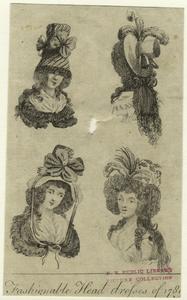 Fashionable head dresses of 1789.
Fashionable head dresses of 1789.
Elaborate hat, France, 1780![View Enlarged Image [Elaborate hat, France, 1780s.]](http://images.nypl.org/index.php?id=824029&t=r)
![View Enlarged Image [Elaborate hat, France, 1780s.]](http://images.nypl.org/index.php?id=824029&t=r)
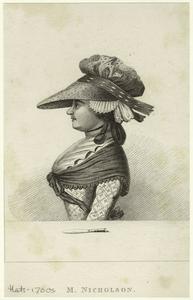
Michaux.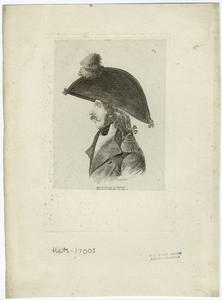

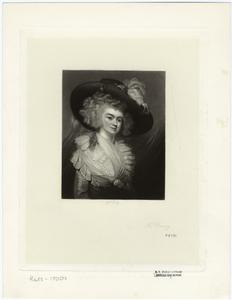 Mrs. Drury.
Mrs. Drury.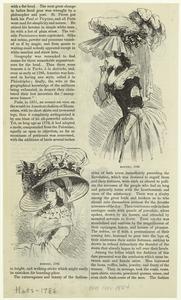 Bonnet, 1786
Bonnet, 1786
Straw Hat
Mid to Late 1700's
Mob Cap


A. Carding (combing the fibers),
No comments:
Post a Comment